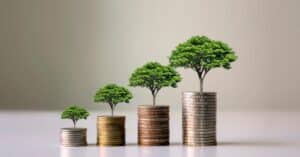COP 28 promised to be the biggest and most ambitious ever, although it was mired in controversy ever since the appointment of the head of the giant Abu Dhabi National Oil Company (Adnoc) Sultan al-Jaber as its leader. Still, it attracted more delegates than ever before (over 97,000) including representatives from nearly 200 countries as well as nearly 2,500 connected to fossil fuel companies (another rather incongruous record!).
The COP 28 finished with a rather abrupt announcement that a compromise on the most important wording of the agreement had been reached; so abrupt was the announcement, in fact, that some delegations, including the one from the most affected Pacific Island states, weren’t even back in the room!
So, what was the outcome of the hours of backroom ‘wheeling and dealing’ and was progress made?
The answer depends on your outlook! Yes, the agreement’s wording, which has to be fully agreed upon by all of the more than 190 countries represented, is a little more direct than those of previous meetings, but in many people’s eyes, it did not go far enough or fast enough.
Fossil Fuels
Amazingly, the wording in the final agreement references fossil fuels for the first time ever (amazingly. as these are the biggest contributors to anthropogenic GHG emissions and have to be addressed if we are to have any chance of limiting climate change) and refers to ‘transitioning away’ from them.
Crucially, however, the agreed text did not call for an outright phasing out of oil, gas and coal. As a result, it leaves “a lot of room for interpretation, according to UN climate chief Simon Stiell. He warned that the “loopholes leave us vulnerable to fossil fuel vested interests, which could crash our ability to protect people everywhere against rising climate impacts.”
So, progress perhaps, but not the massive leap forward that the science has suggested we need if we are to limit warming to less than 1.5oC. More like three steps forward and two (or even two and a half) back, and it doesn’t look any more likely that we will do that than it did before the COP, and it is still 66% likely that we will hit that portentous mark before 2027.
Increasing Renewable Energy Capacity
So what else was agreed? 110 countries did agree to triple renewable energy capacity by 2030, definitely a start. If implemented fully, this would increase the capacity to about a third of global primary energy demand.
They also pledged to double the global average annual rate of energy efficiency improvements by 2030, again no doubt a positive step.
Cost: A Stumbling Block
The major stumbling block, though, could be the cost; to achieve the renewables goal the cost has been estimated at an eye-watering $10.4 TRILLION, and much of that investment needs to be channelled to poorer nations, which so far has received only a fraction of global clean energy investments.
This highlights one of the biggest issues that still needs to be addressed: the growing gap between the finances that developing countries need to fund their climate-related obligations and the support they have secured so far. Their adaptation finance needs are estimated at $215bn-$387bn a year this decade.
Whilst the agreement text welcomed the first funding provided for the new climate loss and damage fund, these commitments amount to less than $1bn. Filling in these climate finance gaps will surely need to be at the top of the agenda at next year’s COP29 in Baku, Azerbaijan.
Conclusion: Words Vs Action
So, to conclude, there are some positives and perhaps some progress, but there is a lot to do, and the wording of the compromise agreement represents just that: words. The key to limiting global warming to even less than the original 2oC target will hang on the actions taken and the speed at which they happen.
Words, though, are important, and the inclusion of the elephant in the room, fossil fuels, in the agreement is surely a signal to investors and industry that the time of fossil fuels is coming to an end.
But, what damage will be done before we finally transition ourselves away from them? And importantly, how do we in the more developed world move towards more sustainable lifestyles and enable the less developed parts of the world to continue developing through clean, renewable energy?
The answer to these questions will be the proof in the ‘transition’ pudding.







